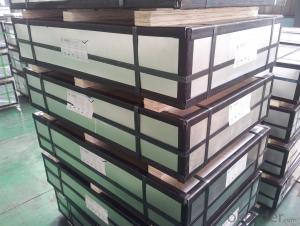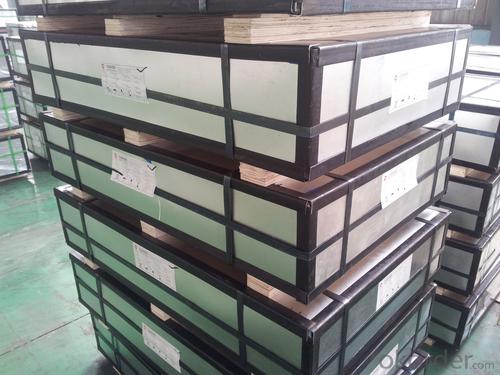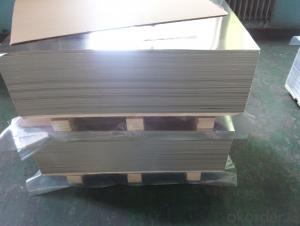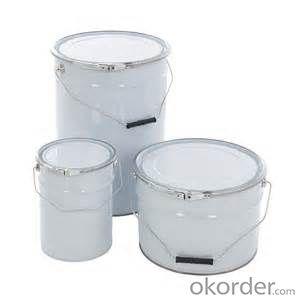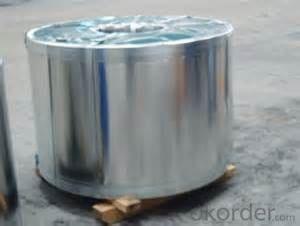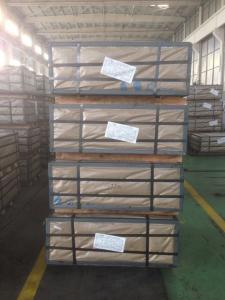High Quality of Tinplate for Paint Chemical Cans
- Loading Port:
- China Main Port
- Payment Terms:
- TT OR LC
- Min Order Qty:
- -
- Supply Capability:
- -
OKorder Service Pledge
OKorder Financial Service
You Might Also Like
Our tin plate (TP) products are made by coating tin using electrolysis on the surface of thin coldrolled steel sheet (black plates), with a thickness of 0.14~0.6 mm. Its shiny surface finish, superb corrosion resistance and formability make tin plates an ideal choice for the food industry and industrial parts producers. Our tin free steel sheet (ECCS) is widely accepted as a more economical substitute for the tin coated steel. Our TP/TFS products are widely used in the production of 3-piece and 2piece (D&I, DRD) cans as well as can lids and bottoms. Our products serve a variety of purposes, including material for steel EOE, toys, and electronic parts.
Our Tinplates Specification:
Standard: ISO 11949 -1995, GB/T2520-2000,JIS G3303,ASTM A623, BS EN 10202
Material: MR,SPCC
Thickness:0.15mm - 0.50mm
Width: 600mm -1150mm
Temper: T1-T5
Annealing: BA & CA
Coil Inner Diameter: 508mm
Weight: 6-10 tons/coil 1~1.7 tons/sheets bundle
Passivation:311
Oil: DOS
Surface: Finish,bright,stone,matte,silver
Packing:
1、For sheets: plastic or waterproof paper, metallic cover and angles, steel strips,wooden pallet.
2、For Coils: plastic or waterproof paper,plastic protect plate,steel strips.
Both Prime and Second Quality Are Available!!!
- Q: How thick is tinplate?
- Tinplate typically has a thickness ranging from 0.13mm to 0.49mm.
- Q: What are the main factors affecting the price of tinplate?
- The main factors affecting the price of tinplate include the cost of raw materials, such as tin and steel, supply and demand dynamics, global economic conditions, currency exchange rates, changes in government policies and regulations, and market competition. Other factors like transportation costs, energy prices, and the overall health of the manufacturing sector can also impact the price of tinplate.
- Q: What are the common widths of tinplate?
- The common widths of tinplate typically range from 600mm to 1,200mm.
- Q: How is tinplate coated for toys and games?
- Tinplate is typically coated for toys and games using a process called electroplating, where a thin layer of tin is deposited onto the surface of the metal. This electroplating technique helps enhance the appearance, durability, and corrosion resistance of tinplate, making it suitable for various toy and game applications.
- Q: How does tinplate affect the shelf life of products?
- Tinplate can significantly extend the shelf life of products due to its properties such as resistance to corrosion, airtightness, and light-blocking abilities. It forms a protective barrier that prevents contact with oxygen, moisture, and other external factors that can cause spoilage or degradation. This helps maintain the quality and freshness of the products, ultimately increasing their shelf life.
- Q: How many kinds of tinplate are there? What is the code number?
- Specification: Tinplate tinplate cans (three cans) is mainly divided into "15120", "15173", "15240" etc.. "15120" capacity is 2.2kg, diameter is 150.3, height is 120; "15173" capacity is 3kg, diameter is 150, height 173; "15240" capacity is 4.5kg, diameter is 150, height is 240.
- Q: Can tinplate be used for hazardous material packaging?
- Yes, tinplate can be used for hazardous material packaging. Tinplate is a durable and corrosion-resistant material that can effectively contain and protect hazardous substances. Its ability to withstand pressure, temperature variations, and chemical reactions makes it suitable for packaging hazardous materials. Additionally, tinplate is often used for food and beverage containers, which require stringent safety standards, further supporting its suitability for hazardous material packaging.
- Q: What are the main applications of tinplate in the jewelry industry?
- Tinplate is commonly used in the jewelry industry for various applications such as making decorative components, clasps, and findings. Its corrosion resistance and malleability make it ideal for creating intricate designs and ensuring durability in jewelry pieces.
- Q: How is tinplate tested for quality and performance?
- Tinplate is tested for quality and performance through various methods including visual inspection, thickness measurement, coating weight determination, adhesion testing, corrosion resistance evaluation, and mechanical property testing. These tests ensure that the tinplate meets the required specifications and standards for its intended applications.
- Q: What are the benefits of using tinplate for coins?
- Tinplate offers several benefits when used for coins. Firstly, tinplate is highly durable, making it resistant to corrosion and wear, ensuring the longevity of the coins. Additionally, tinplate is easily moldable, allowing for intricate designs and detailed engravings on the coin's surface. Moreover, tinplate is a cost-effective material, making it an affordable choice for coin production. Lastly, tinplate is also lightweight, making it convenient for handling and transportation.
Send your message to us
High Quality of Tinplate for Paint Chemical Cans
- Loading Port:
- China Main Port
- Payment Terms:
- TT OR LC
- Min Order Qty:
- -
- Supply Capability:
- -
OKorder Service Pledge
OKorder Financial Service
Similar products
Hot products
Hot Searches
Related keywords
